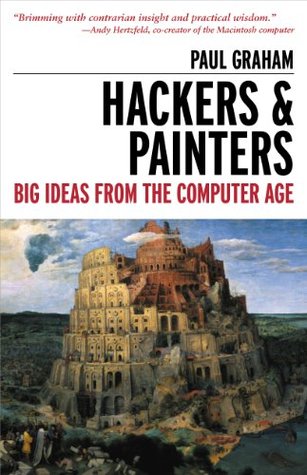More on this book
Community
Kindle Notes & Highlights
by
Paul Graham
Read between
December 16, 2017 - January 3, 2018
Like a politician who wants to distract voters from bad times at home, you can create an enemy if there isn’t a real one.
Hacking and painting have a lot in common. In fact, of all the different types of people I’ve known, hackers and painters are among the most alike. What hackers and painters have in common is that they’re both makers. Along with composers, architects, and writers, what hackers and painters are trying to do is make good things.
The border between architecture and engineering is not sharply defined, but it’s there. It falls between what and how: architects decide what to do, and engineers figure out how to do it. What and how should not be kept too separate. You’re asking for trouble if you try to decide what to do without understanding how to do it.
The place to fight design wars is in new markets, where no one has yet managed to establish any fortifications.
It turns out that looking at things from other people’s point of view is practically the secret of success.
Programs should be written for people to read, and only incidentally for machines to execute.
Authoritarian countries become corrupt; corrupt countries become poor; and poor countries are weak.
The government spying on people doesn’t literally make programmers write worse code. It just leads eventually to a world in which bad ideas will win.
The Mythical Man-Month, adding people to a project tends to slow it down. The number of possible connections between developers grows exponentially with the size of the group.
There are only two things you have to know about business: build something users love, and make more than you spend. If
As for building something users love, here are some general tips. Start by making something clean and simple that you would want to use yourself. Get a version 1.0 out fast, then continue to improve the software, listening closely to users as you do. The customer is always right, but different customers are right about different things; the least sophisticated users show you what you need to simplify and clarify, and the most sophisticated tell you what features you need to add.


